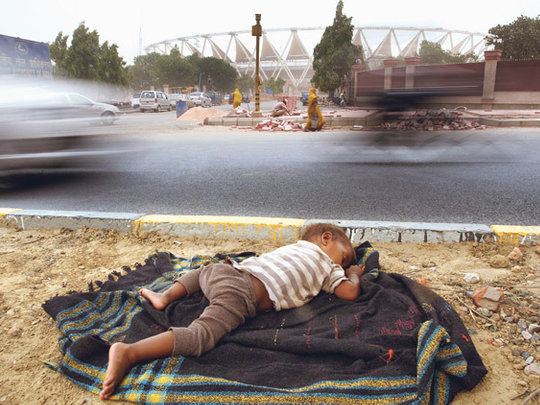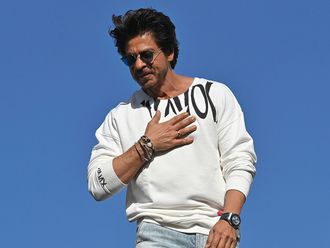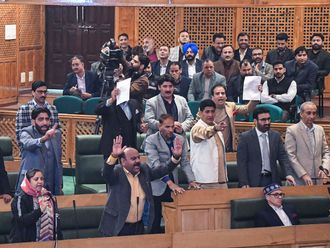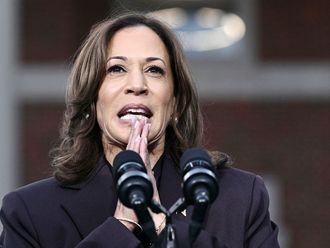
New Delhi: It may be a race against time with the Commonwealth Games less than six months away, but Delhi is bent on winning that race! Despite the scorching heat and tempers rising even more, construction and renovation work are on in full swing.
The Games will be held in Delhi from October 3 to 14.
The largest multi-sport event conducted to date in the country, which previously hosted the Asian Games in 1982, has an anthropomorphic tiger called Shera, as its mascot. (Shera is derived from the Hindi word sher, meaning tiger).
Making a final dash for the deadline, the government is on overdrive. With the Games having the potential to change the skyline of the city, the authorities concerned are providing maximum focus on the Games Village near National Highway 24.
In addition, it is beautifying retail hubs including some of the world's costliest markets like Connaught Place and Khan Market. And by removing street vendors and beggars from the scene of action and several innovative schemes, the Games are set to change how Delhi lives.
Chief Minister of Delhi Sheila Dikshit has an ambitious plan to turn the unruly crowds of Delhi into well-mannered hosts. With little time in hand for the sports extravaganza, she has her task cut out.
The government is working on a campaign called "big book of good manners", which the tourism department plans to introduce to residents via billboards, pamphlets, websites and audiovisuals in the forthcoming months.
In preparation for an influx of English-speaking tourists for the Games, it is implementing a programme to teach English, and the necessary skills to serve tourists, to key workers, including taxi and autorickshaw drivers, security staff, waiters and porters.
There is a feeling among many in Delhi that the push towards making Delhi a world-class destination for sports and tourism has nothing to do with the residents who actually inhabit the city.
But waving off the comments of those opposing the extravaganza, the chief minister said: "The Games will be on for 15 days but it will help the city for the next 15 years. It will take the city years ahead and boost its tourism. Who knows we might win the Olympic bid one day if we are able to successfully conduct the event."
The tourism department is already looking ahead of the games to make Delhi a pleasant location. This, the critics say, means hiding all that is likely to reflect badly on the image that India is so desperately trying to project. The slums in the vicinity have disappeared, which was unheard of in the past many decades.
To expand the road infrastructure, flyovers and bridges have been planned to improve links for the Games and the city in general. Road-widening projects are on at several places, with emphasis on national highways. Similarly, to improve traffic flow on existing roads, the inner and outer ring roads are being made signal free.
Beautification
Beautification involves revamp of footpaths, central verges and street lights. In fact, the beautification drives are mainly the reason why preparations for the games are being criticised. The government's attempts targeting the homeless, beggars and itinerant workers, who come to Delhi looking for a better life, and screening existing slums from view are considered moves for showcasing Delhi at the cost of the poor.
It is felt that this spurt of attention to sports will wane as soon as the Commonwealth games are over. There is criticism that the developments are expected to benefit a few at the expense of many.
But an official of the organising committee of Commonwealth Games said: "The building and expansion that accompanies any international, multi-sporting event is always subject to debate. Infrastructure must be developed, but with the expectation that what is built today will be part of the recreational life of the city in the future.
"We expect that around 100,000 visitors would come to Delhi and believe that the number of repeat visitors will increase after the games. Our endeavour is to make the games an experience of a lifetime, hence the push on infrastructure."
The projects are being carried out by all civic agencies — the Municipal Corporation of Delhi, Public Works Department and New Delhi Municipal Council. The MCD is taking care of the sanitation part of this campaign by opening 300 new toilets in the city. Greening of the roads is being carried out and the city is being made pedestrian-friendly.
The games, no doubt, will significantly boost Brand India's global visibility and viability. While the Jawaharlal Nehru Stadium will be the main venue for the opening and closing ceremonies, athletics and weightlifting, the Siri Fort complex houses the badminton and squash facilities.
Archery, cycling, gymnastics and wrestling will take place at the Indira Gandhi Arena, the largest indoor sports arena in India and the second-largest in Asia, which has a seating capacity for 25,000 people.
Shooting will be held at Dr Karni Singh Shooting Range and hockey matches at the Dhyan Chand National Stadium. About 26 stadiums will be utilised for the games. The venues for hockey, archery, boxing and shooting are among the best in the world.
Indira Gandhi International Airport is being modernised, expanded and upgraded. A new runway is being constructed, which will be one of Asia's longest.
Gulf News: How hopeful are you that all the projects related to the Commonwealth Games will be completed in time?
Suresh Kalmadi: Infrastructure work is on track. Once that's over, we also have test events. Work on most stadiums is complete and the Jawaharlal Nehru Stadium will be ready in June. Since a tunnel was required in the vicinity, the deadline had to be extended.
Once the games are over are will the stadiums be available for the country's sportspersons?
The stadiums that were built for public use went into decline after the Asian Games and a select few became avenues for high cultural events. They will certainly be used for the players of Delhi and other states. Provisions will be made for that and it will be the biggest challenge after the games.
There are massive traffic jams in the city. With the increasing number of vehicles, how will the problem be tackled during the games?
We intend having dedicated lanes to games venues and will use public transportation system. Plans are on to provide free bus and Metro Rail tickets to the games people.
Will schools and offices be closed to lessen traffic?
All of Delhi's schools have been requested to close during the games. Talks are on with other officials also, but no decision has been taken yet to request offices to be closed.
The games have a Rs16 billion (Dh1.24 billion) budget. How do you intend repaying the loan to the government?
We will raise money through sponsorship, television, merchandising and ticketing. As far as TV rights are concerned, the projections have been doubled. And there will be 2.2 million tickets on sale during the games.
Tell us about the opening and closing ceremonies.
This is a secret. All I can say is that the opening and closing ceremonies will be the best and certainly the events to watch. We are engaging the world's best minds, including people who organised the games at Beijing and Wizcraft, who have done spectacular events in India. We also have a four-member team of Shyam Benegal, Javed Akhtar, Prasoon Joshi and Bharat Bala as Core Creative Advisory Committee to oversee the functions.
How do you propose to project the city to the tourists?
India is known for its hospitality and citizens' involvement will be most helpful. The government and the Organising Committee alone cannot ensure everything.
Commercial hub
Connaught Place, or CP, is considered one of the world's few circular markets comprising three circles. With spacious colonnades and walkways, this shopper's paradise is currently a motorists' nightmare.
This heart of the city designed in 1926 is affected most by the game preparations. The entire area needs an empathetic handling of re-development because CP is unlike any other market, wherein from a needle to a motor car, anything can be bought. Touted as one of the most expensive commercial landmarks in the world, the basic features of the project include restoration of the columns and corridors in accordance with the original historical architectural concept.
Chairman of New Delhi Municipal Council Parimal Rai said that the renovation work included replacement of existing windows and frames and plaster and painting of columns and walls. "We intend disciplining of shops' signboards to a uniform size and standardising corridor lighting and façade illumination. All works are continuing simultaneously as we plan to complete the entire refurbishment in next two months."
Even while work is under way in 16 blocks, numbered from A to P, construction of new subways in the outer circle is also on.
Although the market is suffering immensely, the New Delhi Traders' Association feels the ongoing face-lift will ultimately benefit the shopkeepers. During the inception it was meant to cater to only a few thousand people, but more footfall necessitates improved facilities.
Sprawling residences
After being embroiled in controversies, the Commonwealth Games Village apartments at the scenic River Yamuna bank are complete. Spread over 27.17 acres with a magnificent temple as the backdrop, the apartments, developed by Emaar-MGF, are to house 8,000 athletes and officials.
Close to the Akshardham Temple, the project is in a prime location. Its USP is its proximity to the Central Business District of Connaught Place, which is about 7km from the Commonwealth Games venue.
In 2007, environmentalists filed a petition in court seeking to move the Games Village to a different site. The ecologists said it would permanently destroy the ecosystem of the river close to where the construction was taking place.
The case was heard in the Supreme Court, which removed all hurdles by clarifying that the construction was neither on the ‘riverbed' nor on the ‘flood plain' and gave the go-ahead to developers.
The 1,168 apartments in 34 towers were planned in such a manner that the towers facing the temple have 7 floors and those away from it have nine floors.
Apartment prices vary depending on the view. While a two-bedroom apartment of 1,443 sq feet costs Rs19.1 million, a five-bedroom apartment of 3,278 sq feet is worth Rs49.2 million.
The luxury apartments towers are a certified green development project developed as part of Public-Private Partnership with the Delhi Development Authority.
Games village
The government's commitment to make all efforts to eradicate the menace of begging, which is thriving in the city, has led to mobile courts for trying beggars. Termed as Delhi's brand of roving justice, the Delhi High Court have despatched mobile courts in the city to relocate migrant beggars from streets.
The project was launched, ostensibly, to improve the city's image ahead of the games and free the city of more than 60,000 beggars. The mobile courts try each beggar on a case-by-case basis to determine whether the beggar should be sent back to his/her state of residence, or be permitted to remain in government shelters. Each mobile van has a magistrate and a stenographer and it drives through sections of New Delhi, conducting summary trials on batches of beggars brought in by raid squads.
The department had also decided to construct open-shelter homes for beggars in the city and requested managing committees of various religious places not to allow beggars to roam around their premises.
A magistrate said, "The main cause of the huge number of beggars in the capital is the distribution of food at religious places. Vagrants know that they will get free food at such places, hence do nothing for a living and resort to begging."
Although the High Court had said that the raiding party should include at least one witness from the public, no one comes forward. It is left to the raid parties comprising welfare officials and policemen to convince the magistrate that the person apprehended is a beggar.
Beggars simmering dissent
In a move that will hit the livelihood of millions of people and is likely to completely change the city's street food culture, the Municipal Corporation of Delhi has started removing illegal streetside eateries. It's part of an anti-encroachment drive before the games. There are an estimated 20,000 roadside eateries in the city, of which 70-80 per cent are illegal.
Liable to be removed without serving any notice, these are considered encroachments. MCD can only issue licences to eating houses which have a covered roof.
The eateries provide livelihood to millions of workers and offer a quick bite to all classes of people. These eateries earn anything between Rs3,000 and Rs15,000 a month. Some even employ up to a dozen people.
Baljeet Singh, the owner of a stall at ITO said, "We shall continue to function as it is our only means of earning a livelihood. I have been asked to move as my stall is located next to a drain. The MCD is carrying out improvement work in the area and once it is over, we will get back to our normal routine."
Singh had been refused a licence by the MCD and has been running the stall for several years without a licence. He said, "Some of us have got licences for selling items that do not require cooking at the venue we operate from."
Under the rules, roadside stalls should have running water and proper ventilation. The kitchen should be clean and all vessels should be covered to avoid contamination.
Do you think the government's preparations for the Commonwealth Games will make a difference? What does New Delhi need to do to inspire permanent change?












